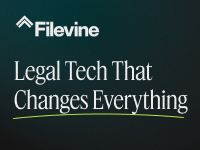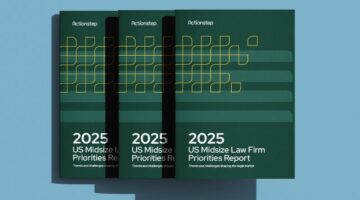
(Photo by William Thomas Cain/Getty Images)
Could this be another one? Another noose and KKK hood in the workplace incident?
Less than a year ago, I wrote a post here in Above the Law in which I noted that: “Earlier, I wrote that ‘[i]t seems that racial harassment cases always have the same racial slurs and tropes: either the N-word, a noose, or both. Always. Although KKK hoods are becoming popular these days.”

How Filevine Bakes AI Into Every Layer Of Your Case Management
It’s like having a junior associate who’s never off the clock.
Well, the N-word and nooses are still popular. But, indeed, cases involving KKK hoods and other white supremacist slurs and epithets are — sure as ever — increasing.
I continued last year: “In April [2017], a company allegedly subjected black and Hispanic employees to ‘severe racial harassment, [which] included a noose, a Ku Klux Klan hood and racist epithets and jokes. Despite complaints by employees to … senior management, the offensive conduct did not cease.’ The EEOC sued and the company settled for $175,000.”
So, we saw both a KKK hood and racial slurs in the same case. Somethings are very resistant to change, and a new case illustrates this.
But first, a quick recap.

Inside The Minds Working At US Midsize Law Firms: 2025 Priorities Revealed
Midsize firms want smarter tech, not more. Our 2025 industry report shows how the right tools—and strategy—can drive growth, efficiency, and better client outcomes.
The N-Word And Nooses In the Workplace
“More than 50 years after the Civil Rights Acts were passed,” I wrote some years ago, “racism continues in the society at large, and in the workplace in particular. … It is extraordinary that the ‘N-word’ and the noose keep reappearing in lawsuits claiming a racially harassing workplace.”
I have posted on my law firm blog for years about virtually every workplace racial harassment case that I see where the N-word or a noose is involved. I have hoped to impress upon employers and employees the seriousness of this, and the necessity of taking action to prevent it, for everyone involved. However, it doesn’t seem to sink in.
I must commend readers to a new post by my partner, Amy Epstein Gluck, about another newly filed N-word lawsuit which is truly hair-raising. Among other things, it appears that white employees built a fort of boxes around the desk of a black employee and wrote on it “whites only.”
It was ignored by management for two weeks.
Surrounded By Co-Workers In KKK Hoods
It’s just been reported that a suit was filed in federal court in in New Orleans by an African-American offshore oil worker whose job was on a rig that involved being hoisted 144 feet into the air in a safety harness to lubricate equipment.
As he was reviewing files, he allegedly saw a rescue diagram that a supervisor had drawn showing him yelling for help as he was “dangling from a high rig structure while surrounded by co-workers in Ku Klux Klan hats.” I can imagine what a “rescue” that would be.
His complaint was ignored.
This may be one of the worst cases of alleged racial harassment I’ve seen — a clear threat to the life of the employee. But there’s always more.
Same As It Ever Was
Last year, the EEOC sued a North Carolina company for a racially hostile work environment. Guess the nature of the allegations?
It was alleged that as soon as the African-American employee began working, his white foreman and some co-workers called him the “N-word” and other racial epithets on an almost daily basis, made racial jokes, and more than once physically threatened him.
Shockingly, according to the complaint, “the company’s equal employment opportunity officer witnessed at least one of the incidents of harassment and received complaints about some of the abuse, but took no action to stop it.” Now this would be clear retaliation.
The employee quit.
Supervisor Said He “Could Shoot A N _ _ _ _ r A Mile Away”
Say what???
Yep, this was from a really shocking racial harassment suit filed by the EEOC in late 2016 against a Minnesota construction company on behalf of two African-American employees. The EEOC alleged that “the harassment included the [white] supervisor making racially derogatory comments to [two African-American employees] including calling them ‘n—-r.’ The supervisor told [the two employees] that he had a gun, and made threats that he could ‘shoot a n—-r a mile away.’ The supervisor made a noose out of electrical wire and threated to hang [them].”
Other supervisors witnessed these events, and one of the employees complained to another supervisor and the company’s safety director.
Nothing was done.
Incredible. These allegations, if true, are sickening — threats upon more threats. And, it was alleged, nothing was done. In the U.S.?
But, again, there’s always a worse case, it seems. Read the case which Amy just posted about.
“Die, N—-r, Die”
Back in 2012, the EEOC announced a $500,000 settlement with an Atlanta manufacturer to settle a racially hostile work environment lawsuit which alleged that graffiti and racial epithets were directed at African-American employees, including: “KKK,” swastikas, Confederate flags, “white power,” and “die, n—-r, die.”
Hangman nooses were also displayed, and one employee found one at his work station.
Takeaway
An EEOC regional attorney said some time back that:
“Racial discrimination and harassment are always unconscionable and illegal, but a situation where African-Americans are called racial slurs and threatened with a noose and gun is utterly shocking and unacceptable in the 21st century.”
Indeed.
For years, I’ve written that the workplace is a microcosm of the real world, and, therefore, it is no wonder that it echoes the roiling waters of the American landscape which has existed for generations.
Employers must insure that these terrible actions do not occur — and that if a complaint is made, that it is expeditiously investigated and remedied. And everyone in the workforce must refuse to tolerate this — or else you stand to be complicit.
 Richard B. Cohen has litigated and arbitrated complex business and employment disputes for almost 40 years, and is a partner in the NYC office of the national “cloud” law firm FisherBroyles. He is the creator and author of his firm’s Employment Discrimination blog, and received an award from the American Bar Association for his blog posts. You can reach him at [email protected] and follow him on Twitter at @richard09535496.
Richard B. Cohen has litigated and arbitrated complex business and employment disputes for almost 40 years, and is a partner in the NYC office of the national “cloud” law firm FisherBroyles. He is the creator and author of his firm’s Employment Discrimination blog, and received an award from the American Bar Association for his blog posts. You can reach him at [email protected] and follow him on Twitter at @richard09535496.